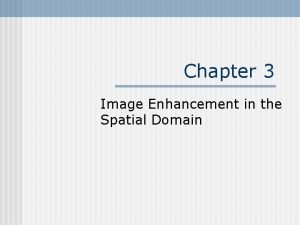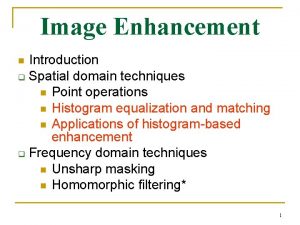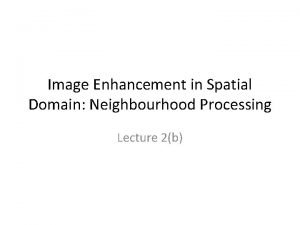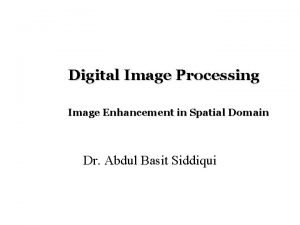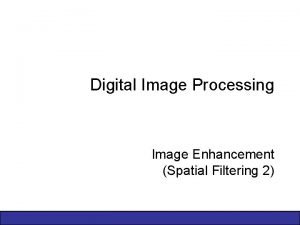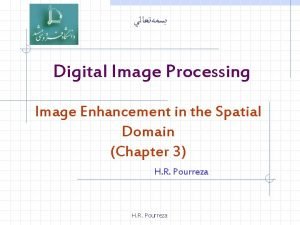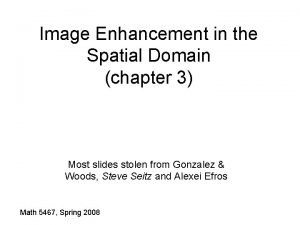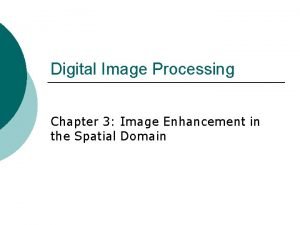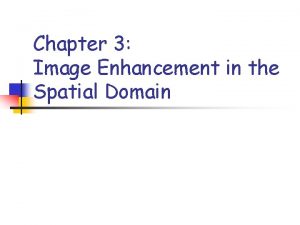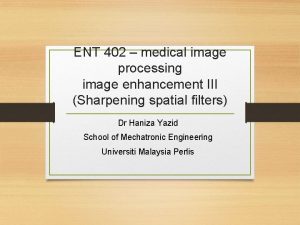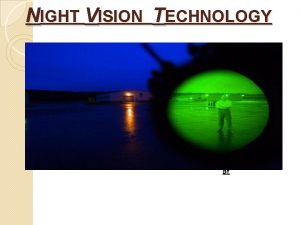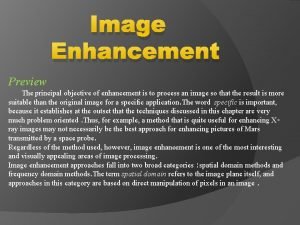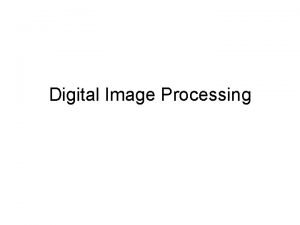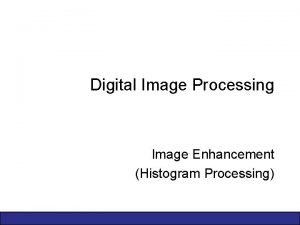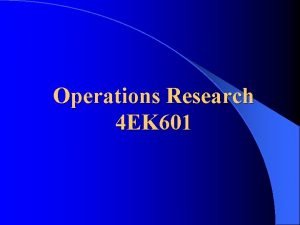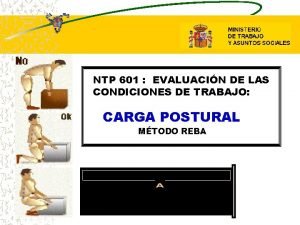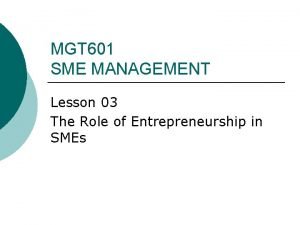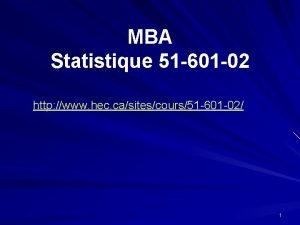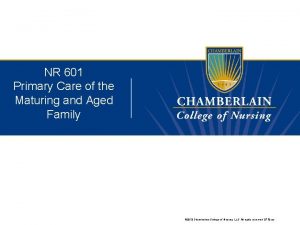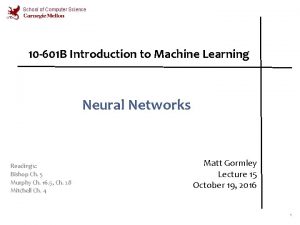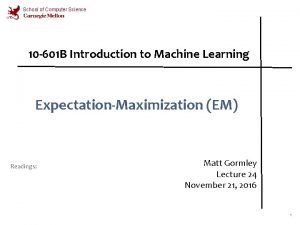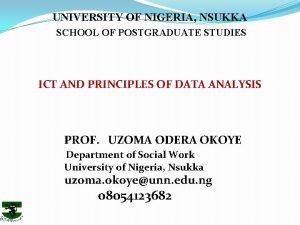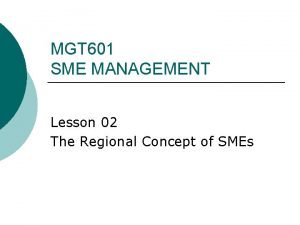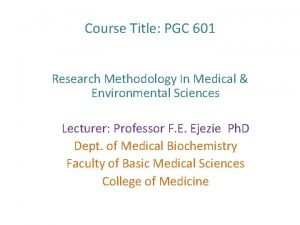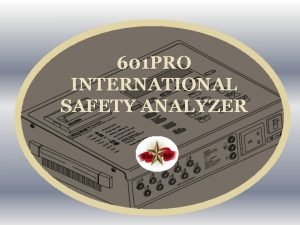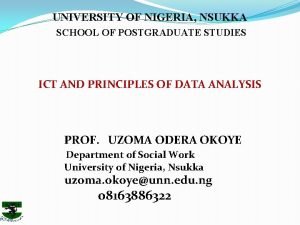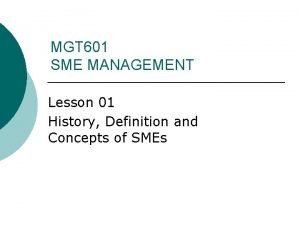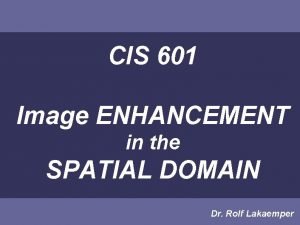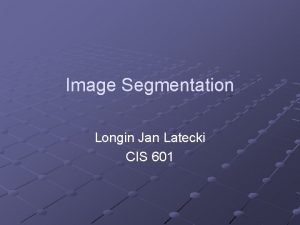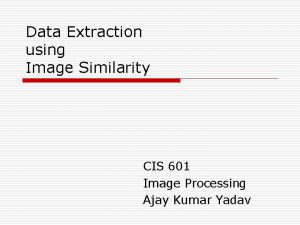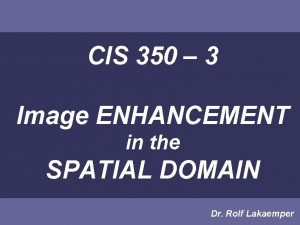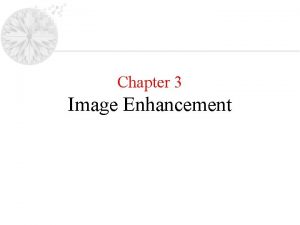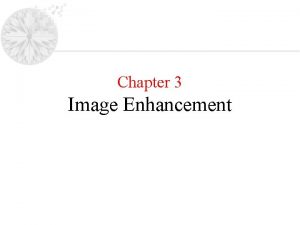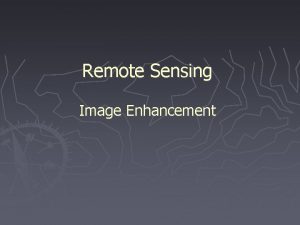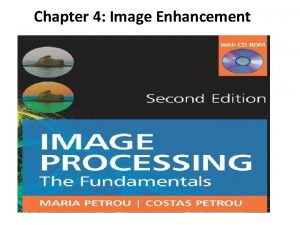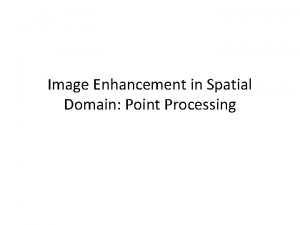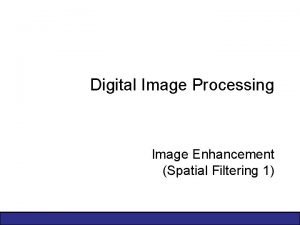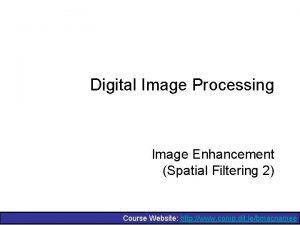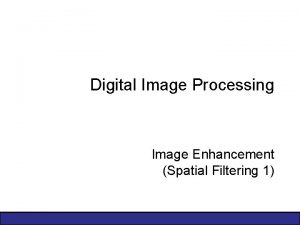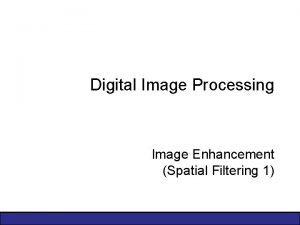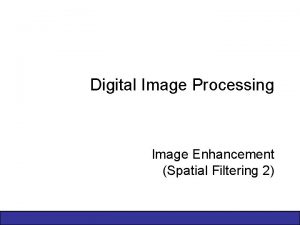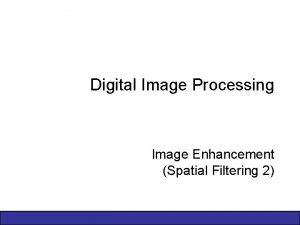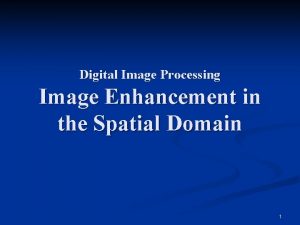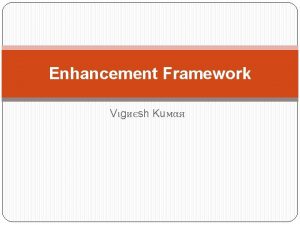CIS 601 03 Image ENHANCEMENT in the SPATIAL



































- Slides: 35

CIS 601 – 03 Image ENHANCEMENT in the SPATIAL DOMAIN Longin Jan Latecki Based on Slides by Dr. Rolf Lakaemper

Most of these slides base on the textbook Digital Image Processing by Gonzales/Woods Chapter 3

Introduction Image Enhancement ? • • • Enhance otherwise hidden information Filter important image features Discard unimportant image features Spatial Domain ? • • Refers to the image plane (the ‘natural’ image) Direct image manipulation

Remember ? A 2 D grayvalue - image is a 2 D -> 1 D function, v = f(x, y)

Remember ? As we have a function, we can apply operators to this function, e. g. T(f(x, y)) = f(x, y) / 2 Operator Image (= function !)

Remember ? T transforms the given image f(x, y) into another image g(x, y) T f(x, y) g(x, y)

Spatial Domain The operator T can be defined over • • • The set of pixels (x, y) of the image The set of ‘neighborhoods’ N(x, y) of each pixel A set of images f 1, f 2, f 3, …

Spatial Domain Operation on the set of image-pixels 6 8 2 0 3 12 200 20 10 6 (Operator: Div. by 2) 4 1 0 10 5

Spatial Domain Operation on the set of ‘neighborhoods’ N(x, y) of each pixel 6 8 (Operator: sum) 12 200 6 8 2 0 12 200 20 10 226

Spatial Domain Operation on a set of images f 1, f 2, … 6 8 2 0 12 200 20 10 (Operator: sum) 5 5 1 0 2 20 3 4 11 13 3 0 14 220 23 14

Spatial Domain Operation on the set of image-pixels Remark: these operations can also be seen as operations on the neighborhood of a pixel (x, y), by defining the neighborhood as the pixel itself. • • • The easiest case of operators g(x, y) = T(f(x, y)) depends only on the value of f at (x, y) T is called a gray-level or intensity transformation function

Transformations Basic Gray Level Transformations • • Image Negatives Log Transformations Power Law Transformations Piecewise-Linear Transformation Functions For the following slides L denotes the max. possible gray value of the image, i. e. f(x, y) [0, L]

Transformations Image Negatives: T(f)= L-f Output gray level T(f)=L-f Input gray level

Transformations Log Transformations: T(f) = c * log (1+ f)

Transformations Log Transformations Inv. Log

Transformations Log Transformations

Transformations Power Law Transformations T(f) = c*f

Transformations • • • varying gamma ( ) obtains family of possible transformation curves >1 • Compresses dark values • Expands bright values <1 • Expands dark values • Compresses bright values

Transformations • Used for gamma-correction

Transformations • Used for general purpose contrast manipulation

Transformations Piecewise Linear Transformations

Piecewise Linear Transformations Thresholding Function L if f(x, y) > t, 0 else t = ‘threshold level’ Output gray level g(x, y) = Input gray level

Piecewise Linear Transformations Gray Level Slicing Purpose: Highlight a specific range of grayvalues Two approaches: 1. Display high value for range of interest, low value else (‘discard background’) 2. Display high value for range of interest, original value else (‘preserve background’)

Piecewise Linear Transformations Gray Level Slicing

Operations on a set of images Operation on a set of images f 1, f 2, … 6 8 2 0 12 200 20 10 (Operator: sum) 5 5 1 0 2 20 3 4 11 13 3 0 14 220 23 14

Operations on a set of images Logic (Bitwise) Operations AND OR NOT

Operations on a set of images The operators AND, OR, NOT are functionally complete: Any logic operator can be implemented using only these 3 operators

Operations on a set of images Any logic operator can be implemented using only these 3 operators: A B Op 0 0 1 1 1 0 0 1 1 0 Op= NOT(A) AND NOT(B) OR NOT(A) AND B

Operations on a set of images Image 1 AND Image 2 1 2 3 9 7 3 6 4 (Operator: AND) 1 1 2 2 1 0 1 1 2 2 2 0

Operations on a set of images Image 1 AND Image 2: Used for Bitplane-Slicing and Masking

Operations on a set of images Exercise: Define the mask-image, that transforms image 1 into image 2 using the OR operand 1 2 3 9 7 3 6 4 (Operator: OR) 255 2 7 255 3 7 255

Operations Arithmetic Operations on a set of images 1 2 3 9 7 3 6 4 (Operator: +) 1 1 2 2 2 3 4 10 9 5 8 6

Operations Exercise: What could the operators + and – be used for ?

Operations Example: Operator – Foreground-Extraction

Operations Example: Operator + Image Averaging
 Spatial filtering
Spatial filtering Image enhancement in spatial domain
Image enhancement in spatial domain Image enhancement in spatial domain
Image enhancement in spatial domain Image enhancement in spatial domain
Image enhancement in spatial domain Combining spatial enhancement methods
Combining spatial enhancement methods The objective of sharpening spatial filter is to
The objective of sharpening spatial filter is to What is enhancement in the spatial domain?
What is enhancement in the spatial domain? Histogram equalization
Histogram equalization Combining spatial enhancement methods
Combining spatial enhancement methods Idl medical ent
Idl medical ent Spatial data vs non spatial data
Spatial data vs non spatial data Image enhancement in night vision technology
Image enhancement in night vision technology Objective of image enhancement
Objective of image enhancement Contoh pelembutan citra
Contoh pelembutan citra Point processing
Point processing Image negatives a gray level transformation is defined as
Image negatives a gray level transformation is defined as Image enhancement
Image enhancement 601 south belvidere street
601 south belvidere street Ek601
Ek601 Ntp reba
Ntp reba Mgt 601
Mgt 601 Http 601
Http 601 Primary care medicine goroll test bank
Primary care medicine goroll test bank 601(b)(10)
601(b)(10) 601(b)(10)
601(b)(10) Pgc 601
Pgc 601 Sme management definition
Sme management definition Pgc 601
Pgc 601 Deffibrilator
Deffibrilator Pgc 601
Pgc 601 Peugeot 601 eclipse
Peugeot 601 eclipse Tcp 601
Tcp 601 Hino 601
Hino 601 601(b)(10)
601(b)(10) Traditional italian sports
Traditional italian sports The size of sme is assessed through: mgt601
The size of sme is assessed through: mgt601
